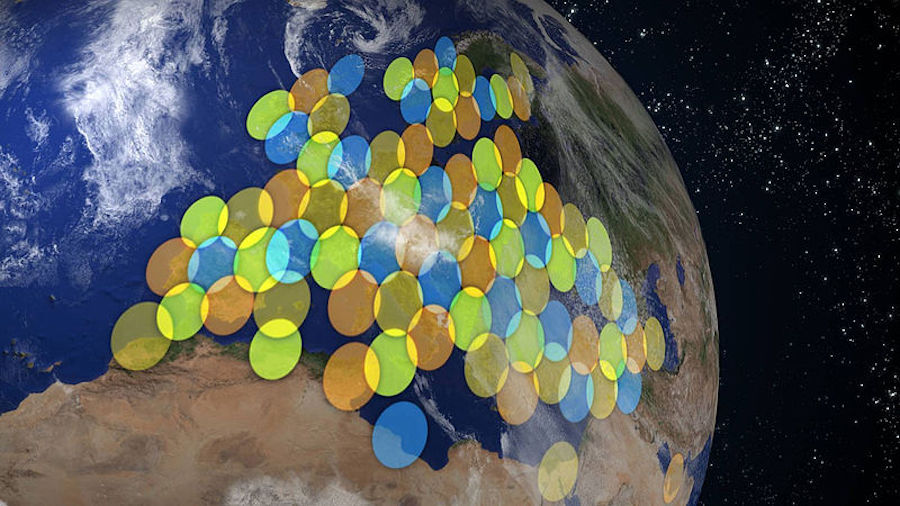
The space arms race keeps accelerating, new reports warn (Image Credit: Space News)

COLORADO SPRINGS – It’s hard to imagine how the world’s economies and military forces would operate without unfettered access to services provided by satellites in space. But as space becomes increasingly important to terrestrial activities, the tools and weapons available to disrupt and damage satellites are proliferating around the world, according to two reports released April 4.
“The existence of counterspace capabilities is not new, but the circumstances surrounding them are,” says the 2022 edition of the Secure World Foundation’s “Global Counterspace Capabilities: An Open Source Assessment.”
“Today there are increased incentives for development, and potential use, of offensive counterspace capabilities. There are also greater potential consequences from their widespread use that could have global repercussions well beyond the military, as huge parts of the global economy and society are increasingly reliant on space applications,” the report says.
Brian Weeden, director of program planning at the Secure World Foundation and one of the editors of the report, said the broad theme this year is “proliferation.” Previously only a handful of nations had space weapons. “We just keep adding more countries every year,” he said. Based on open-source information, this year’s report details the counterspace capabilities of the United States, Russia, China, India, Australia, France, Iran, Japan, North Korea, South Korea and the United Kingdom.
A separate report by the Center for Strategic and International Studies, the Space Threat Assessment 2022, also uses open-source information to track the developments of counterspace weapons that threaten U.S. national security interests in space.
It wasn’t long ago that there was a duopoly in space: the United States and Russia, Susan Gordon, former principal deputy director of national intelligence, wrote in the introduction to the CSIS report.
This is a new era where space has become the “domain in which every interest of an adversary or competitor is affected,” Gordon noted.
China was once an afterthought in the space race, she added. This past year China launched the most satellites of any nation, “demonstrated its intention to project hard and soft power through the growth in on-orbit military support capabilities, and grabbed our attention and imagination with its counterspace demonstrations ranging from hypersonic missile launches to co-orbital rendezvous with other satellites.”
Russia, the earliest innovator in space, “re-grabbed our attention with its direct-ascent anti-satellite test that created a threatening debris field as well as apparent GPS jamming in Ukraine that showed how counterspace is being integrated into combined operations,” Gordon said.
“The proliferation of international and commercial vehicles on orbit, while presaging a new era of space use for every aspect of governmental, business, and societal advance, will demand attention on the responsible use of space as a shared environment.”
Weeden said that of all the weapons that could be used to take down satellites, the most concerning today are cyberattacks because they are relatively easy to pull off, as seen in the February 24 attack against Viasat’s KA-SAT network that interrupted satellite broadband service in Ukraine just as Russian forces began invading the country.
“The Viasat attack is a very interesting event,” Weeden told reporters. “It shows that attacks often are not against the satellites but the ground system, in this case the modems used to send and receive data.”
Todd Harrison, CSIS senior fellow and co-author of the threat assessment report, noted that such cyberattacks “are not physically destructive, nobody’s life is at risk so they are viewed as the type of attack anybody can do with impunity.”








